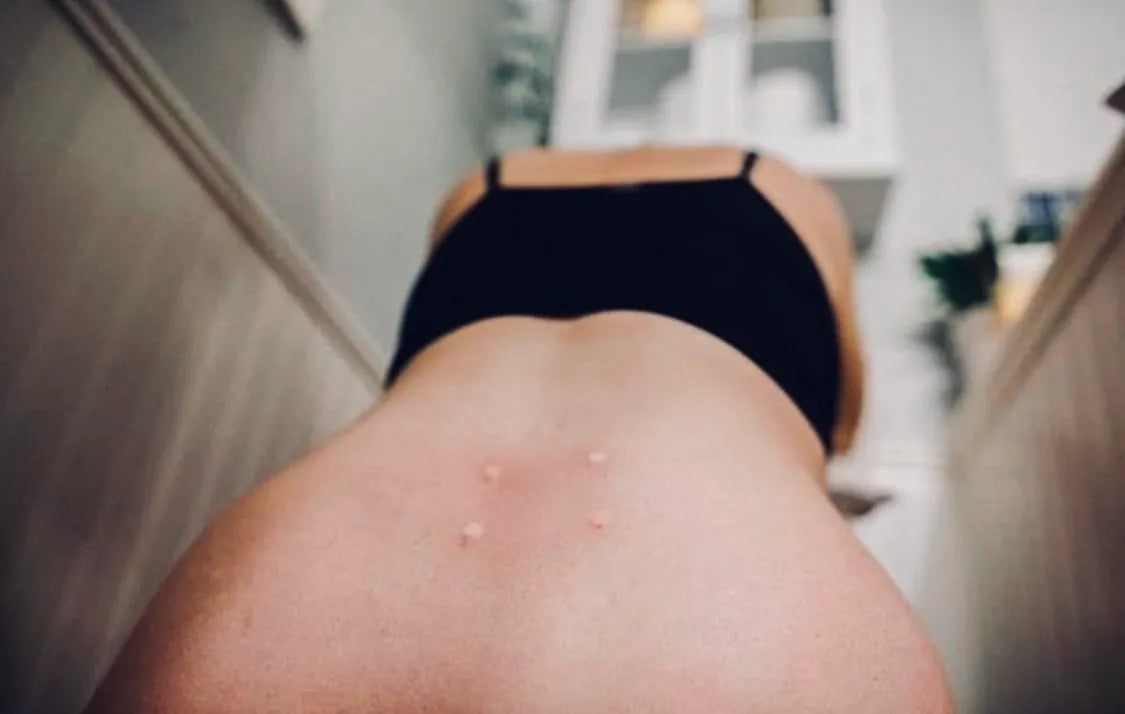Sterile water injections weren’t something I had given much thought to when I was preparing for our homebirth. In all honesty, I don’t think I knew much about them… maybe I had heard about it but I had filed that information away deep in my subconscious brain. After a very long “back labour” at home (active labour kicked off Sunday evening and I didn’t transfer to the hospital until Tuesday night around 9pm with baby girl arriving Wednesday morning 1:12am) feeling exhausted and unable to continue the way I had been going I made the decision to transfer to the hospital and seek additional support.
Deep in the throws of exhaustion and discomfort I was kind of at that point where I would have accepted basically anything to feel like I could meet my baby ASAP. I was basically prepared to be offered pain killers, an epidural and feared that I would likely end up having a c-section (just like my mum) and honestly, I probably was at the point where I would have accepted anything. So… when I was first offered sterile water injections i.e. no narcotics and the ability to continue to move throughout labour, I was momentarily stunned and then felt a glimmer of hope. So of course, I was happy to give it a try and was excited that there was an option where I would not have to expose myself or my baby to any of the drugs or more invasive interventions I thought I would have been offered.
In order to receive the injections I was asked to get up on the bed on my hands and knees and on the count of three two midwives (one on each side) would inject two tiny little beads of sterile water (different to a saline solution which is why it stings so much) under the skin right above the sacro-iliac joints in my pelvis. It stung like a mother trucker…!!! but again… I was at that point where it was like “yep cool what next!? Anything to bring my baby earthside!”. The sting lasted about 20 seconds and then, after my next contraction the midwife asked how things were feeling, could I still feel the pain in my back?
I couldn’t!!! It was completely different!!!! I could feel the contraction (or wave or whatever you want to call it) at the front! I was amazed!! I was invited to get into the birth pool and soon after the sounds I was making begain to change. I was making deep, bearing down sounds, I could feel things deeper and deeper and before I knew it I was uncontrollably bearing down and roaring my baby out. Now, it may not have been only the sterile water injections that helped move things along. I truly beleive the journey to the hospital and being forced to have to walk and be uncomfortable in the car (and basically just not in the birth pool anymore) helped move things along... but the injections DEFINITLEY helped reduce the discomfort I was feeling in my back.
I love educating clients about their different options, and after my positive experience with sterile water injections I think it’s a great one to keep in mind as a possibility.
Here is some more information about how these sterile water injections work….
Sterile water injections, also known as intradermal sterile water injections (ISWIs), have been used as a non-pharmacological pain relief technique during labour for many years. They involve injecting small amounts of sterile water into specific points on a woman's lower back.
The main benefit of sterile water injections is their potential to provide relief from back pain during labour. Many women experience intense lower back pain during the active phase of labour, and sterile water injections can help alleviate this discomfort. The injections work by creating a temporary distension and stimulation of the skin, which in turn triggers the release of endorphins, natural pain-relieving substances produced by the body. The endorphin release can help reduce the intensity of the back pain experienced during contractions.
Here are some key advantages of using sterile water injections during labour:
1. Non-pharmacological approach: Sterile water injections offer a drug-free alternative for pain relief during labour, which can be particularly appealing to women who prefer to minimize the use of medications during childbirth.
2. Quick and simple procedure: The injections are relatively quick and straightforward to administer. They involve injecting small amounts of sterile water just below the skin's surface, usually in four points on the lower back. The procedure can be performed by a skilled healthcare professional, such as midwife, or doctor.
3. Safety profile: Sterile water injections have a good safety profile and do not pose significant risks to the mother or baby. Since sterile water is used, the injections do not contain any medication that could have adverse effects on the woman or her child.
4. Localized effect: The injections provide localized pain relief specifically targeting back pain during labour contractions. This targeted relief can help women manage their discomfort without affecting the overall progress of labour or the woman's ability to move freely.
It's important to note that sterile water injections may not work for everyone or provide complete pain relief. Each woman's experience with pain during labour can vary, and different techniques may be more effective for individual cases.


